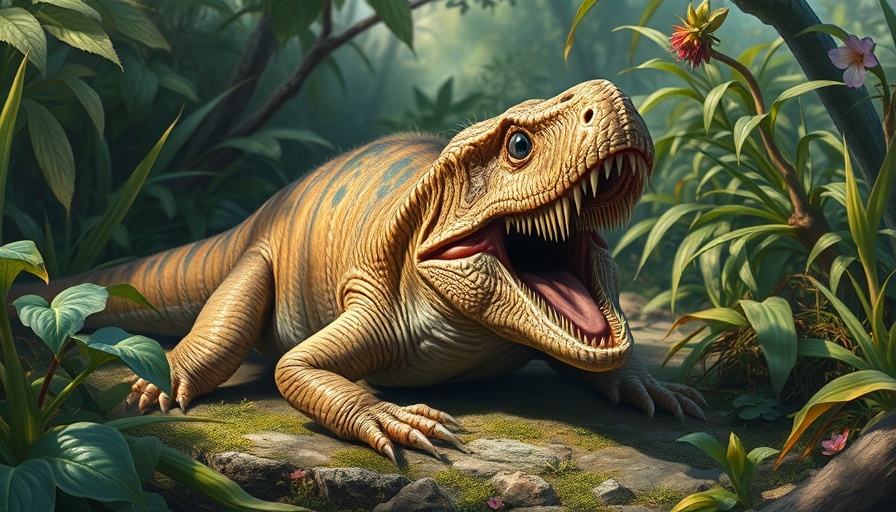
The Fascinating Discovery of Breugnathair elgolensis
In a groundbreaking paleontological discovery, researchers have introduced the world to Breugnathair elgolensis, a unique Jurassic species unearthed on the Isle of Skye, Scotland. This reptile, which measures about 16 inches long, is captivating scientists by sporting a remarkable blend of features common to both lizards and snakes. Its name, which translates to 'false snake of Elgol,' pays homage to its unusual anatomy.
Unpacking the Chimeric Features
Breugnathair possesses a short body and gecko-like limbs, yet its jaws and hooked teeth exhibit striking similarities to modern pythons. The initial assumption among paleontologists upon discovering the fossil in 2015 was that they were dealing with multiple animals due to the bizarre combination of traits. However, advanced imaging techniques and genetic analysis confirmed that this fossil belonged to a distinct group known as Parviraptoridae, a subgroup within the squamates that intriguingly includes both lizards and snakes.
Revitalizing Our Understanding of Reptilian Evolution
The insights gained from Breugnathair promise to reshape our comprehension of reptilian evolution. Previous consensus indicated that snakes diverged from lizard-like ancestors, yet the exact lineage remains murky. As explained by leading researchers, the anatomical traits of Breugnathair challenge assumptions about these evolutionary pathways, suggesting that predatory features typically associated with snakes may have evolved independently in various extinct groups, contrary to the previously accepted belief.
Bridging the Gap: A New Perspective on Ancestry
Researchers are now tasked with determining if creatures like Breugnathair can shed light on the origins of modern snakes or if its resemblance is purely coincidental. Paleontologist Roger Benson expresses that while Breugnathair might not directly represent an ancestor of snakes, its discovery provides invaluable insight into a more complicated narrative involving these reptiles' ancestry.
Scientific Methodology Behind the Discovery
This revelation was made possible through cutting-edge techniques, including 3D imaging and X-ray scans, allowing scientists to create a detailed reconstruction of the fossil. Such methodologies underscore how advanced technology is vital in modern paleontological studies, allowing for nuanced interpretations based on previously unexamined details.
What This Means for Future Research
As we move forward, Breugnathair elgolensis serves as an emblematic reminder of how unpredictable evolutionary paths can be. It invites a fresh examination of evolutionary traits found in other fossil specimens, potentially leading to many new discoveries in an era where the ancient past continues to reveal its secrets. Scientists aim to further explore the genetic history of squamates, hoping that Breugnathair might connect dots that were once viewed as uncorrelated.
Conclusion
The unveiling of Breugnathair elgolensis not only highlights the complexities of reptilian evolution but also showcases the ongoing efforts of paleontologists to piece together the history of life on Earth. As research in this field continues, we can expect new insights that may reshape our understanding of the natural world and its inhabitants.
 Add Row
Add Row  Add
Add 




Write A Comment